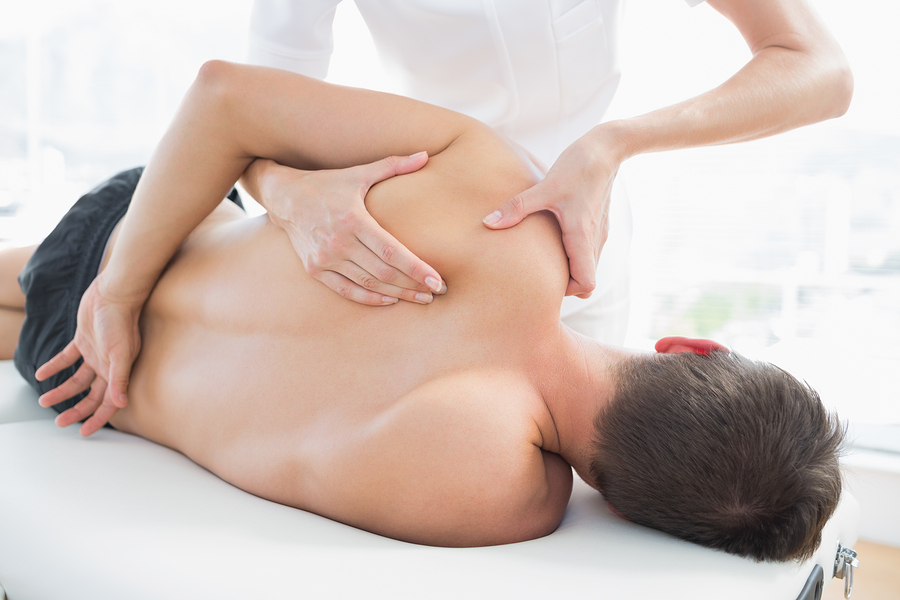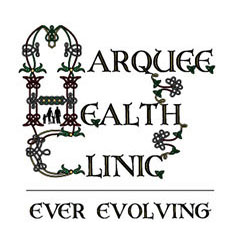About Osteopathy
Osteopathy is largely a hands on and holistic approach to your health. The body is linked by many structures which encompass the musculoskeletal system, including your bones, joints, muscles and nerves. There must be good circulation and interaction between these systems to help your body to maintain optimum health & well-being.
What should I expect during my first consultation?
Please arrive 10-15 minutes early for your initial osteopathy consultation as you will be required to fill in a form which will provide us with vital information and consent to treat you. It is advised that you wear comfortable clothing. Gowns are provided if required. During the initial consultation you will be asked about any persistent problem/symptoms that you may be experiencing. You may also be asked about your medical history and any medications that you are currently taking. A full osteopathic examination will take place, including the assessment of areas that may not immediately appear related to your perceived problem. This is a key step in treating the cause of your problem and not just the symptoms. This approach is highly regarded amongst James’ patients and they generally experience a change in symptoms within 1-2 visits.
Some conditions that osteopathic treatment may assist
Back and Neck Pain
A broad range of people of varying ages and gender will experience back pain at some point in their lives. Common causes may include prolonged sitting or standing, manual labour, pregnancy, injury and dysfunction. James will work with you to reduce inflammation, improve joint mobility and circulation to the affected areas, and help prevent future pain and inflammation by suggesting appropriate exercise and lifestyle changes.
Headaches and Migraines
Common causes of headache and migraine pain may include restriction originating from the neck and upper thoracic region, stress, injury, inflammatory conditions and abdominal congestion. James works towards reducing muscular tension and inflammation, along with any nerve compression present. You may benefit from improved mobility of your ribs, thoracic and cervical spine, along with general mobility of other potentially affected areas. Patients are given the knowledge to prevent further persistent headaches through appropriate suggestion of exercise and lifestyle changes.
Pregnancy
Osteopathy is a safe method of treatment for expectant mothers during pregnancy, as well as beyond birth for both mothers and babies. James will assist you with supporting your body during the natural stages of change and progression throughout your pregnancy, in a manner proven to be completely safe for you and your growing baby. The holistic nature of James’ osteopathic treatments results in both pre and post-natal care that encompasses the whole body.

Conditions Pertaining to Children
The gentle yet effective osteopathic treatments offered by James are safe and beneficial for children and teenagers of all ages. Some conditions commonly treated in children include pain and inflammation associated with growth, structural development, sporting injuries, and headaches. James works to recognise and alleviate the potential stresses that may cause negative symptoms in the bodies of growing and developing children, whilst offering advice on exercise and other general lifestyle influences that children may face.
Conditions Pertaining to Seniors
James offers a safe, gentle and effective form of treatment suitable for elderly patients. Working to treat the cause of a variety of conditions that are often mistakenly regarded as untreatable, James helps to improve your balance and mobility, prevent further wear and tear on your joints and to steer you towards an active and independent lifestyle. Advice on preventing injuries and daily exercise regimes may also be provided.
Other treatable conditions
- Bursitis
- Sciatica
- Knee pain
- Ligament sprains and tears
- Tendonitis
- Chronic injuries and rehabilitation
- Abdominal congestive disorders
- Metabolic disorders
- Fluid retention
- Sinus pain
Visceral Osteopathy
The field of visceral osteopathy is not new but is becoming more relevant in current patient-orientated health care systems in which the body’s inherent self-regulating and healing mechanisms are increasingly recognised and valued therapeutically.
Visceral osteopathy is a way of exploring those tensions of the body that reside within the organs and associated tissues, with the aim of improving overall movement, reducing barriers to better function and allowing the body’s own self-healing and self-regulating mechanisms to function more optimally. Any problem within the body may have a visceral component.
Osteopaths maintain and develop the scope of their practice by exploring the human dynamic in increasingly three dimensional ways. Osteopathy in this context underlines how three dimensional anatomy relates to physiological function and how manual treatment can help restore optimal function and improve healing.
The visceral field of osteopathy is also concerned with reflex activity in the central and peripheral nervous systems, neurological emotional – immune links, effective circulation and drainage of all the body fluid systems and tissue in conjunction with the three dimensional dynamics of the body biomechanics including musculoskeletal, myo-facial, connective tissue and organ structure systems.
Common conditions, symptoms and health benefits that may be successfully treated and managed with visceral techniques include; bloating, menstrual cramping/pelvic pain/ reproductive health, urinary incontinence/frequency/bladder health, bronchial congestion, liver/gallbladder congestion referral, gastric/stomach pain/hiatus hernia (heart burn), gastrointestinal inconsistencies, oesophageal reflux, thyroid/parathyroid health, health and vitality of the vascular, immune and endocrine systems and diaphragmatic synchronicity.
The intra-peritoneal viscera must be able to move over each other and over abdominal walls they are in contact with. This is to accommodate respiratory pressures on the viscera (especially those most sub-diaphragmatic), gross body movements such as bending, twisting, reaching, sitting and standing etc. so as to accommodate differences in content of the hollow viscera such as the stomach and colon.
It is not uncommon for tissues within the visceral (organ) systems to lose their normal functions, including their contractile, elastic and distensible properties. When the structure of these tissues is modified an area of stronger mechanical tension is created causing a restriction. A restriction has a detrimental effect on all neighbouring structures, and affects the axis of motion of organs, as well as the directions of force lines in the body.
Better movement is considered the key to this process. Osteopaths aim to interact with the physiological functions within the body and to promote optimal health and functional capacity by removing irritating factors and barriers to the homeostatic self-regulating mechanisms of the body.
James C. Phillips Osteopath: B Sc Osteo, M Ost; Acupuncture: cert prac; Massage Therapist: Dip H Sc
